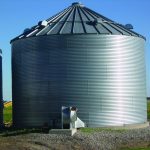As seen at Ag in Motion: Tools are available to monitor and manage moisture and temperature of stored grain, particularly helpful when weather at harvest can throw farmers a curveball.


Prairie weather has a way of upsetting farmers’ harvest plans

Farm Safety: Canola is particularly susceptible to spoilage in storage

While malting grade offers premiums, farmers must meet stringent quality standards to avoid being left with feed

Improved moisture conditions can mean different strategies

Consider your bins when the weather swings from extreme cold to unseasonably warm

A Manitoba agronomist offers up some tips for farmers on a budget

Let's take a Prairie-wide view of soil moisture at freeze-up in 2023

Seven tips from Prairie Agricultural Machinery Institute